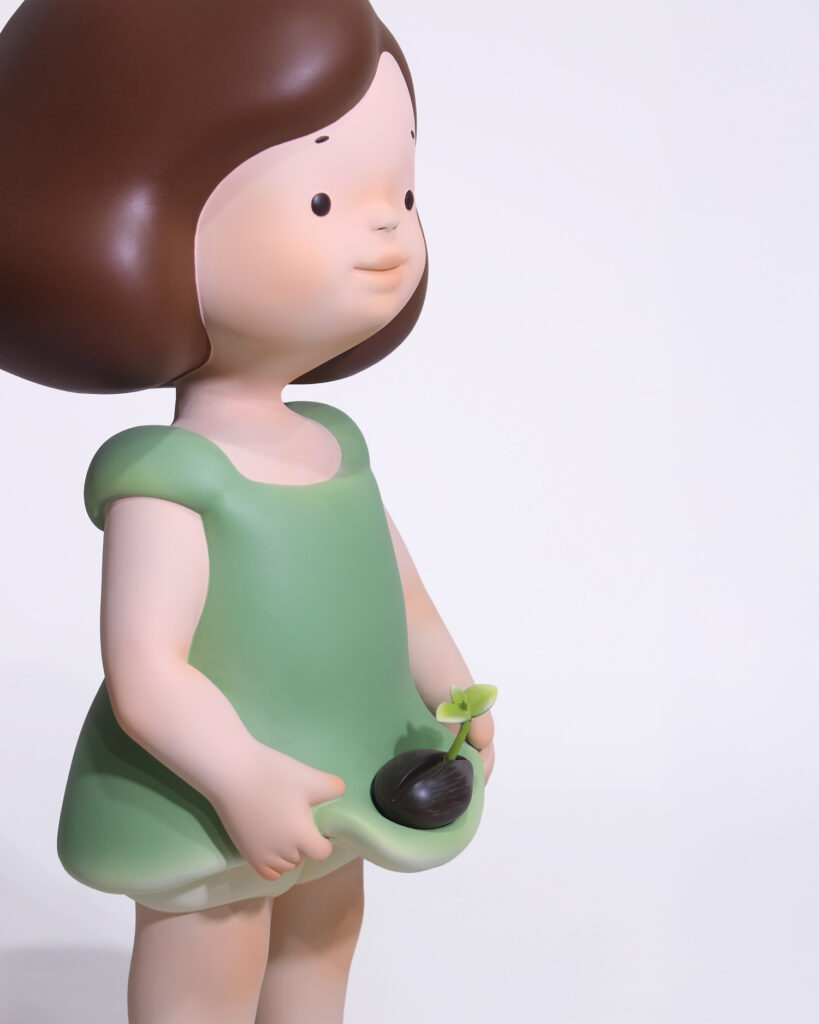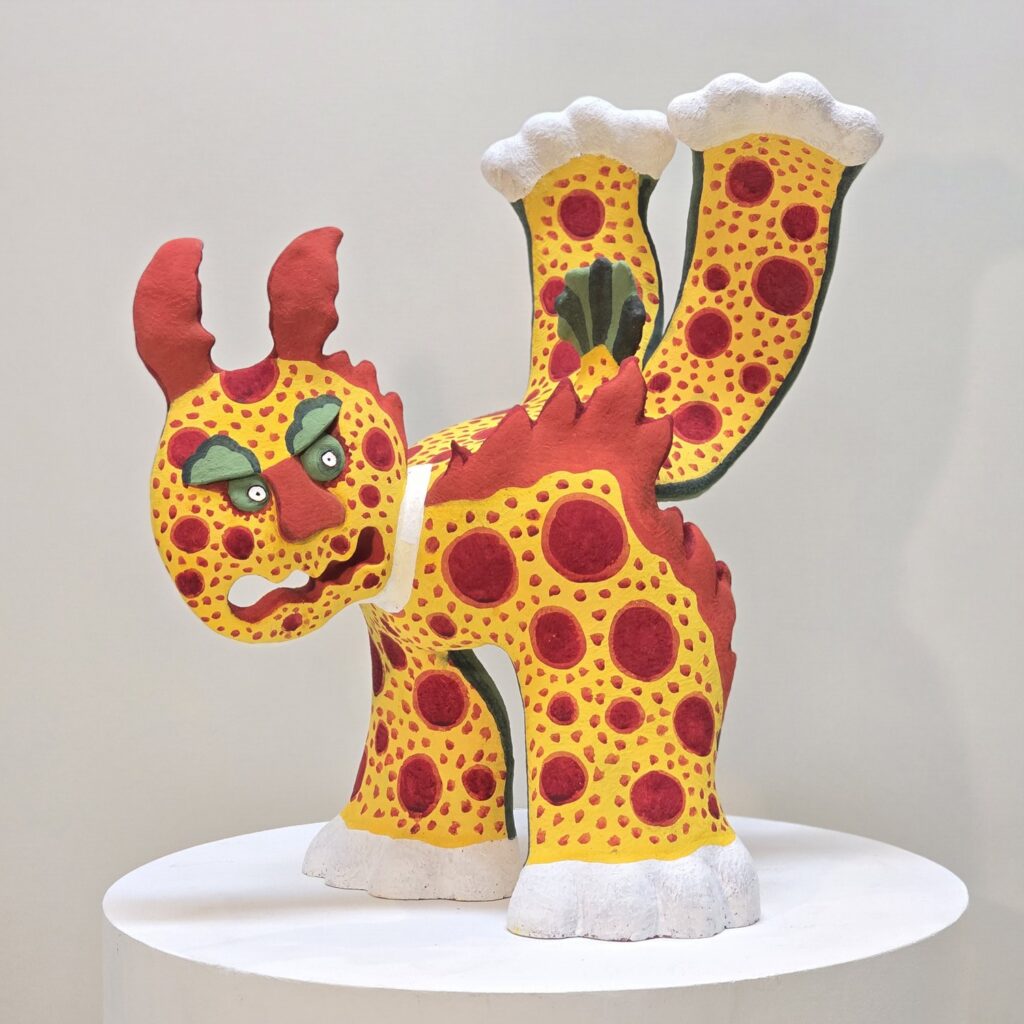Project IGUYENA

Project Group IGUYENA is a culture and art project group that communicates with the world through artistic perspectives on contemporary society, space, humans, and nature. About 30 young artists from various genres, including sculpture, painting, installation, and media, are growing together to convey the good influence of our society.
Locations
42-5, Geumgwangmosan-gil, Anseong-si, Gyeonggi-do, Republic of Korea
+82 10 6672 6415

EVE, Daughter of Deliciosa, 2025, Acrylic on PLA, 24 × 24 × 52 cm
The light that seeped through the holes of the Deliciosa entered in fragments.
Etched onto a small body, it became a gentle glow that shimmered even in darkness.
The Deliciosa emptied itself to pass the light on to others,
and the fragments of light resting on its body did not scatter,
but instead became the very presence of the Gardener.
The light does not stop—it flows.
Within that flow, it nurtures itself and illuminates the paths of others.
One day, the light that once touched her will come to rest upon another.

Gyuyoung Lee, Haetae restoration project – It’s fire ! fire !, 2025, Korean paint on ceramic, 70 × 40 × 70 cm
In my art work, Haetae is not just a god. Through his smile, confident pose, I want to show that I can connect the past and the present, reclaim the identity of Koreans in a multicultural world, and overcome the heavy reality with a smile.
After all, life is short and always has to be fun!

Seonghyeon Jeong, Mix Cross-section, 2025, Silicone, 200 × 120 cm
Cross Section
The Cross Section series transforms the cut surfaces of an object into its visible exterior. While cutting the pieces for easier disposal after several failed attempts, I inadvertently revealed the contents hidden inside. I became intrigued by the accidental, marbling-like patterns formed by the forces applied in shaping the exterior of the cross-sectioned area.
The “inside” is something protected or concealed by the “outside”; without the outer layer, there can be no interior either.
We live in a world of surfaces. Our inner selves are always hidden, and we are often reluctant to expose them. Yet, paradoxically, I find myself curious about the interiors of everything that is not myself. Had the work not failed—or had I never cut it—the inner parts would have remained a secret. The act of revisiting a failed work becomes, like a hunting dog, a way to uncover what I myself cannot see.
